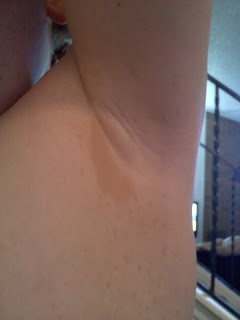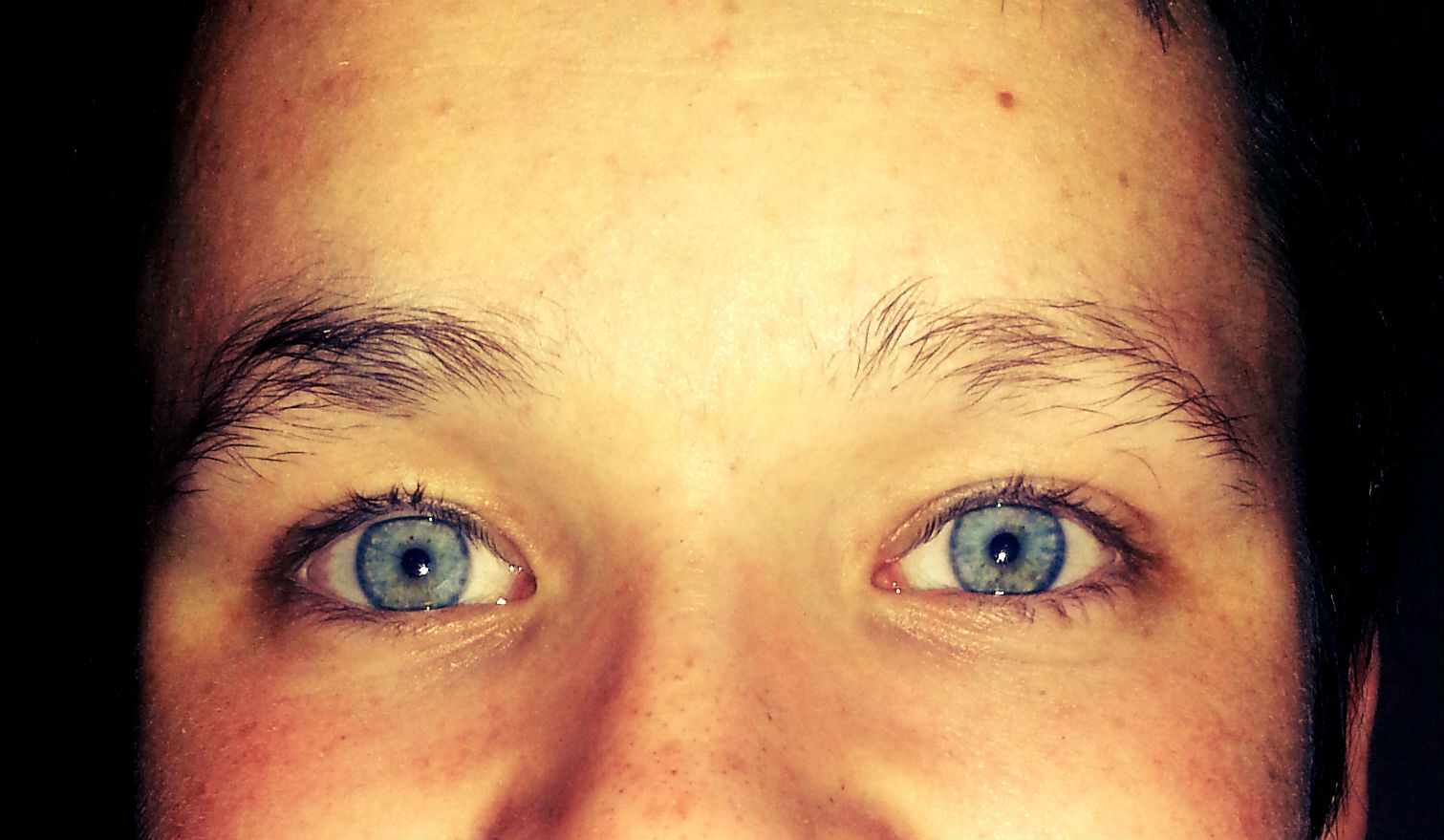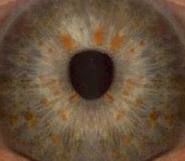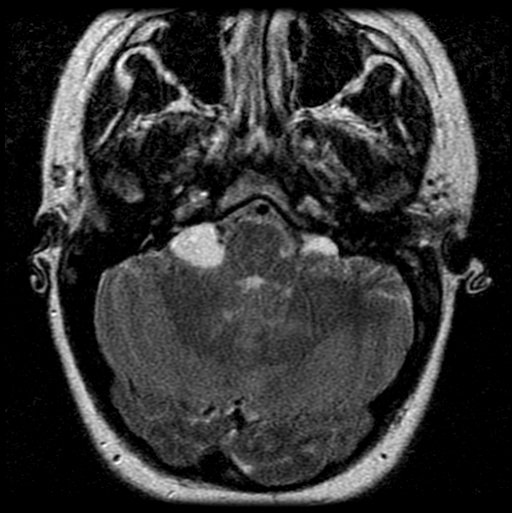|
What is Neurofibromatosis (NF)?
NF is a condition which causes tumors to grow on nerve tissue, producing skin
and bone abnormalities.
NF is often diagnosed in childhood, occasionally in infancy, but usually around 3 to 16 years of age.
Those with NF have a dramatic and wide range of symptoms- some children live almost unaffected by the condition, while others might be moderately to severely disabled, depending on the number, size, and location of tumors.
NF is a genetic disorder, which means there is no cure to be found.
The symptoms of NF, however, can be treated in many cases, and research continues to find more ways to deal with NF tumors and the complications they cause.
Learning disabilities, including Autism and Aspergers, occur in about half the children with NF. Parents should keep close track of the child's progress, and be ready to seek extra help in the classroom.
For my children....ALL THREE went through Neuropsychological testing, which helped fine point areas of concern and getting their IEP's as accurate as possible.
Neurofibromatosis is passed down through the parents' genes, and can affect the brain, spinal cord, nerves, skin, and other systems in the body. In about HALF of those with NF, however, happens from a 'spontatneous mutation'. This means that there is no direct family history.
ALL those who have NF have a 50% chance of passing the gene on to a child. NF does NOT stay "dormant" or skip generations.
**Did you know? NF1 is THE MOST COMMON genetic disorder in humans- Affecting approximately 1 in every 2500 births.**
So What Does NF Look Like?
Neurofibromatosis is defined by tumors, called neurofibromas, that grow along nerves in the body, or on or under the skin. As the tumors increase in size, they can press on vital areas of the body, causing problems in the way the body functions.
 
Neurofibromas often first appear in childhood, especially during puberty. Many neurofibromas can be removed. Although usually benign (non-cancerous), an estimated 3% - 5% become cancerous.
The first noticeable sign of NF is almost always the presence of brown café au lait spots (birthmarks). These spots are harmless. They can be found anywhere on the body.
 
Axillary Freckling- is often seen under the arms or in the groin area.
 
Another common diagnosis feature of NF1 is Lisch Nodules. Like Cafe au Laits, these are harmless, but a very important finding in comfirming NF.


Sometimes, a closer look, can indicate problems. Optic Nerve tumors are found in about 15-40% and typically diagnosed during childhood. MOST of the time, these tumors just require monitoring, however in some cases, doctors have found that using chemotherapy prevent these tumors from growing.
In our family, of the three children with NF- Only ONE has optic nerve issues...And he sees the Ophthalmologist every 3 months. So far, vision and tumors have stayed "stable".
STABLE is a word you will get to know quite well...And a word that you will celebrate often!
Neurofibromatosis is usually diagnosed based on a combination of findings. A child must have at least two of the following signs to be diagnosed with NF1:
-
café-au-lait spots of a certain number, size, and location
-
the appearance of two or more neurofibromas (often resembling pea-sized bumps on the skin)
-
Lisch nodules on the irises
-
an optic glioma (tumor along the main nerve of the eye that is responsible for sight)
-
certain skeletal abnormalities
-
a family member with NF1
-
freckling under the arms or in the groin
Tests like MRI's and X-rays may be used to screen for tumors or evidence of skeletal problems. A child's head circumference will be measured, as kids with symptoms of NF can have a circumference that's larger than normal for their age. Blood pressure will be monitored. Doctors also take a detailed personal history, looking for signs of learning difficulties.
Treatment for NF1 includes removal of the neurofibromas for cosmetic purposes, treating the complications (see below), and getting intervention for children with learning disabilities. Kids will be referred to appropriate medical specialists to monitor and treat complications, which may include:
-
seizures (up to 40% of children with NF1 have them)
-
high blood pressure
-
scoliosis
-
speech impairment
-
optic nerve tumors (which can cause vision problems leading to blindness)
-
early or delayed onset of puberty
Rarely, neurofibromas can become cancerous (3%-5% of cases). In these occurrences, surgery, chemotherapy, or radiation may be necessary.
Common Questions
Is there a cure?
No--Currently there is no cure.
If my NF is mild/severe, does that mean my child/ren will
have mild/severe NF?
Unfortunately, there is no way to predict how severe your NF will be. The variability is so wide, even in the same family, NF can be mild to severe.
Is NF contagious?
Absolutely not. The Neurofibromas can cause significant cosmetic issues, but no one can "catch" NF.
I have heard of NF being referred to as the Elephant Man
Disease...Is this true?
No. NF is NOT the 'Elephant Man Disease'...Joseph Merrick (aka The Elephant Man) had Proteus Syndrome. Some speculation indicates that Merrick may have had both NF and Proteus, but there has been no medical proof of this. You can read more about Merrick by clicking HERE
Can NF be prevented?
There is nothing that can be done to prevent NF, other than gene selection. This is a procedure done at conception, by a genetic doctor.
Will I or my child live a normal life?
MOST of the people living with NF, live relatively normal lives. As with anyone WITHOUT NF....Paying attention to symptoms is very important. I would say that I personally live a life that is filled with more doctor appointments, but in general, those with NF can go on to live happy/healthy/LONG lives.
For my children, I have worked very hard making sure I do everything to make their lives as "normal" as possible. I have had to spent A LOT of time with their teachers, getting their IEP's in place...And making sure I helped the teachers understand what NF is.
What do I need to do if I think my child has NF?
Mention your concerns to your child's doctor. Most of the time, when NF is suspected, the doctor will "watch" your child for more symptoms. For my children, the doctor noticed the 'cafe au laits' during routine exams, but passed them off as "nothing to worry about"....
But if you have concerns, it is always best to voice them. Ask for more tests.
The very best thing you can do, if your child DOES have NF, is to not get too upset. I know the heartache that comes, when a child gets a diagosis that has so many uncertainties...But staying calm and educating yourself is the begining of doing more than just living with NF.
-------------------------------------------------------
What is NF type 2?
NF2 is characterized by the presence of bilateral acoustic tumors and is rarer, seen in 1 in 50,000 births. People with NF2 usually develop benign tumors on the nerves in their ears, causing hearing loss, eventual deafness, and problems with balance.

This is a picture from an MRI that my daughter Bailey had taken in 2008. Bailey has NF type 1, so this finding not only confused ME....But her doctors were also shocked.
The 2 bright white spots in the middle are 'acoustic neuromas'...And we were told that it is IMPOSSIBLE for a person to have NF1 AND NF2. But the MRI shows a different story.
The severity of both types of NF varies greatly. In families where more than one person has NF, it can present with different physical signs and complications for each person.
Diagnosis and Treatment depends and varies from person to person. For US, the doctors decided to monitor these tumors and as long as they are not affecting hearing and balance, we leave them alone.
To diagnose NF2, doctors will check for any evidence of hearing loss. Hearing tests as well as imaging tests to look for tumors in the nerves of the ears, spinal cord, or brain will most likely be performed. Drs will also determine if there's a family history of NF2.
Genetic testing is also available for people with a family history of either NF1 or NF2, though such testing is still not 100% sensitive. Amniocentesis or chorionic villus sampling can sometimes determine if an unborn child has the condition.
Treatment for NF2, surgeons will likely need to remove the auditory nerve tumors, which may cause deafness afterward. When parts of the auditory nerve are removed, hearing aids won't work.
Currently, researchers are conducting trials with medications in the hopes they'll be able to offer more treatment options.
Caring for Your Child
If your child has already been diagnosed with NF or NF2 and you notice that a growing tumor is beginning to cause a problem, tell your doctor immediately. Any changes or growth of a tumor, could indicate a problem, which is why people with NF are closely monitored.
|